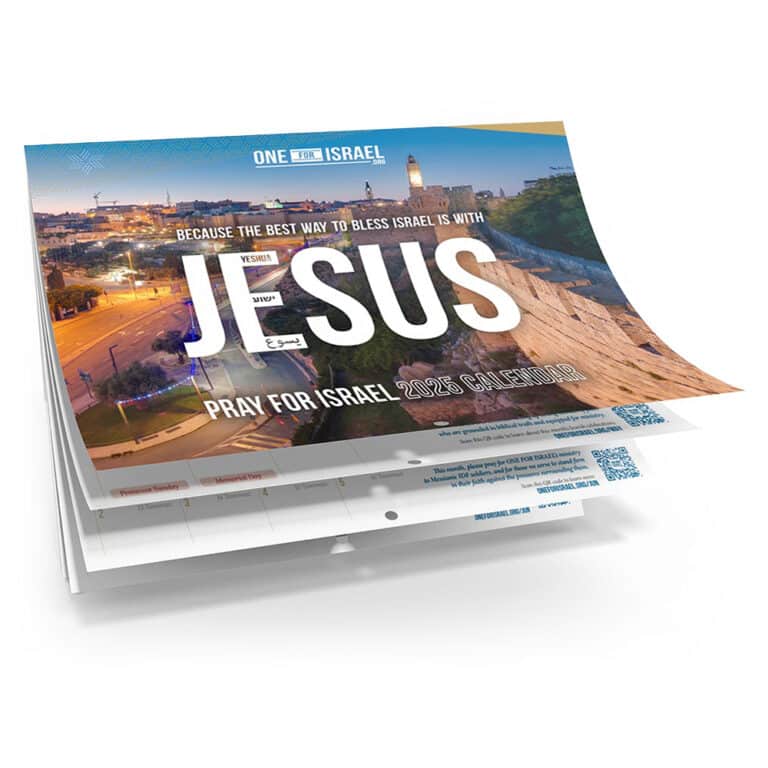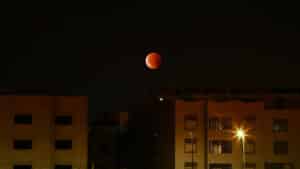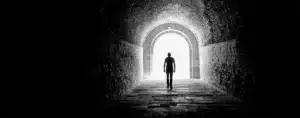When the author of Hebrews wrote about the high priest entering the holy of holies once a year, he assumed that his readers knew he was talking about the Day of Atonement. He was, after all, writing to a bunch of Hebrews. But even today, I expect most Christians read Hebrews 9 knowing perfectly well what he is talking about:
These preparations having thus been made, the priests go regularly into the first section, performing their ritual duties, but into the second only the high priest goes, and he but once a year, and not without taking blood, which he offers for himself and for the unintentional sins of the people. (Hebrews 9::6-7)
At no point does he mention the words “Day of Atonement”, but the point is clear – he is drawing the parallel between Yeshua and the priest going into the holy of holies on Yom Kippur, (Hebrew for Day of Atonement). Yeshua is our great high priest who has done the work “once and for all”. Atonement was well and truly made for every sinner, Jew and Gentile, for all time. We know about the annual ritual he is referring to.
The myth of the rope
We can almost visualize it. Many Christians have a picture in their mind of the priest entering the tabernacle on the Day of Atonement at great risk to himself (to face God without atonement means certain death) and so the community of Israelites waited outside with bated breath to see if he was going to come out again alive – if the atonement had really been successful. Many imagine that priest with a rope tied around his ankle, so that the other priests to pull him out again if necessary without endangering their own lives by going into the holy of holies. If the bells around the edge of his garment stopped ringing, it was time to yank the corpse back out.
But that rope is nowhere to be found in Scripture.
However, there was another kind of rope in Jewish lore that featured on the Day of Atonement – again, not in Scripture, but we do have evidence of it in ancient sources. According to tradition, when Yom Kippur came to an end, the nation awaited the “official seal”: a sign from God that he had accepted the sacrifice and that the nation’s sins had been absolved. What was that sign? A red rope hanging in the Temple. A scarlet thread that turned white if everything had met God’s approval. That was how the High Priest and the entire nation knew that God had accepted their Yom Kippur sacrifice. The people would dance, celebrate and be joyful. Their sins had been wiped out and absolved for another year. In the Gemara, the Sages (Hazal) describe the following:
Roughly 40 years prior to the destruction of the Temple, which was destroyed in the year 70 AD, that same red rope, the scarlet thread, stopped turning white. This caused the nation’s leaders great concern. As of the year 30 AD, God stopped giving His approval on Yom Kippur. The scarlet thread no longer turned white. God was no longer willing to accept the Yom Kippur sacrifice. As of the year 30 AD, God stopped dwelling in the Temple, which, 40 years later, was also destroyed.
Do you remember what happened around the year 30 AD? From then on, the rabbis had to reinvent Judaism in a way that would work even without God’s approval. Meanwhile, all those who accepted Yeshua’s sacrifice for their sin have been able to enjoy the intimate presence of God ever since.
The priest’s outfit
Chances are, you’ve been imagining the priest’s attire wrong. Ordinarily, the high priest’s outfit was something of dazzling splendour. There were bright colors and a breastplate of sparkling precious stones. This is how we tend to think of the high priest on duty in the temple, but on the Day of Atonement he would in fact have been dressed entirely in white for the occasion.
On Yom Kippur, the high priest was required to take off these glorious robes in exchange for simple, white linen garments, in order to go into the holy of holies. Ramban, a Jewish sage, suggested it was reminiscent of a serving angel, and that the purity of the simple, white material symbolised the holiness of the day (רמב”ן, ט”ז, ד – Ramban 17,4). Only his turban remained.
To all intents and purposes, he looked just like any other priest. This foreshadows Yeshua, our great high priest, putting aside his robes of heavenly splendour and putting on human flesh to become one of us – and yet remaining holy.
The number of times he goes in and out of the holy of holies
Most people assume the priest went in, did the business, and (all being well) came back out again. Job done. But no. The priest went in and out at least three times. His final exit also has something prophetic to say about Yeshua.
Before he was acceptable in God’s sight to offer sacrifices for the people, the priest had to go in and offer incense that would cover the ark “so that he would not die” (Leviticus 16:13). Then after that, he had to go back in and take some bull’s blood to sprinkle on the ark cover for him and his family. And only after that was he to make atonement for the holy place via the blood of the goat, on behalf of the people of Israel.
On the Day of Atonement, two goats were chosen – one to be sacrificed, and one to be released into the wilderness, never to be seen again. The priest had to lay his hands on its head, symbolically transferring the nation’s sin to the goat before it disappeared forever.
But it was the final exit of the priest after all the work had been completed that really mattered. That was what the people of Israel were waiting for, and counting on.
Yom Kippur was not designed to atone for the sin of individuals, but for the sin of Israel as a nation
Now that Yeshua has come, we can all enjoy that atonement on a personal level, but God being God, he will cross every “t” and dot every “i”. This picture will be fulfilled in every way. Yom Kippur perfectly foreshadows the atonement that Yeshua purchased for all believers, but it pertains Israel’s sin as a nation as well.
It’s true to say that many Israelis today misunderstand the Day of Atonement, thinking that the main things about it are fasting and riding your bicycles on car-free roads for one special day a year, but one day, we will all understand in full. Our Great High Priest will come out of the heavenly temple upon which earthly patterns are based for the final time, and Israel – as a nation – will see him as he truly is.
Then I will pour out on the house of David and the inhabitants of Jerusalem a spirit of grace and supplication, when they will look toward Me whom they pierced. They will mourn for him as one mourns for an only son and grieve bitterly for him, as one grieves for a firstborn. (Zechariah 12:10)
This is a promise of God.
Until that glorious day, we will pray and fast along with the rest of Israel on the Day of Atonement. We will be praying that eyes would be opened to their Messiah, and we invite you to join us. Many Jewish people do have revelations of the truth at this time – on this special day that God designed to speak to Israel about sin and atonement. We can be sure that this year too, there will be Jewish people who hear God’s voice and understand what he is saying through the multi-layered picture of the Day of Atonement.
For more study articles, videos and up to the minute ONE FOR ISRAEL news
follow us on
Facebook, Twitter, Instagram, YouTube
or subscribe to our blog and newsletter!
Photo by Sarah Noltner on Unsplash
















